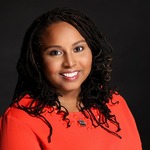How to Incorporate Inclusive Language in Your Marketing Materials
// By Althea Fung //
 Language can build relationships and forge bonds, but it can also create barriers. Content writers and marketers carry implicit biases that can rear their ugly heads when crafting copy.
Language can build relationships and forge bonds, but it can also create barriers. Content writers and marketers carry implicit biases that can rear their ugly heads when crafting copy.
“Bias in and of itself isn’t a bad thing. Evolution developed it for survival,” says Kristen Syrett, PhD, an associate professor and undergraduate program director in the Department of Linguistics at Rutgers University in New Jersey. “But bias in language can have negative consequences. Linguistic bias can be used to exclude people from dialogue, but inclusive language can be used to invite people into a dialogue and recognize differences.”

Kristen Syrett, PhD, associate professor and undergraduate program director in the Department of Linguistics, Rutgers University
To help writers proactively create inclusive content, Syrett and a team of linguists in the Linguistic Society of America’s Committee on the Status of Women in Linguistics developed the Guidelines for Inclusive Language, which was an update to the previous Guidelines for Nonsexist Usage. It includes tips on how to address issues related to race and ethnicity, disabilities, and gender.
“There are a number of different practices we all can engage in to help to show we are aware of and appreciate diversity,” Syrett says.
What Is Inclusive Language?
Inclusive language is language that avoids terminology that expresses or implies ideas that are sexist, racist, or otherwise biased, discriminatory, or denigrating to any group of people. For health care, ensuring content is inclusive can make a difference in the experience of potential patients.
